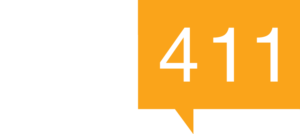
By now you’ve probably heard of Artificial Intelligence (AI) bots like ChatGPT and Google’s Bard. You’ve also probably heard about how it might be affecting all manner of job markets and hiring processes.
One of the most significant ways that AI is changing the Human Resources industry is in the process of hiring. AI-powered tools can automate many of the tasks involved in the hiring process, including screening resumes and even conducting interviews. This can free up Human Resource Officers to focus on more strategic tasks, such as developing talent acquisition strategies and building relationships with top talent. AI-powered tools can also help HR professionals to make better hiring decisions. By analyzing large amounts of data, AI tools can identify patterns that would be difficult to spot for human beings. This information can help HR professionals to make more informed decisions about which candidates are the best fit for a particular job.
In addition to automating tasks and improving decision-making, AI is also changing the way that HR professionals interact with candidates. AI-powered chatbots can be used to answer candidates’ questions, provide them with information about a company, and even conduct preliminary interviews. This can help HR professionals to save time and resources, and it can also make the hiring process more efficient and user-friendly for candidates.
In addition to the ways that AI is already being used in HR, there are a number of other potential applications for AI in the future. For example, AI could be used to:
- Provide personalized career development advice. AI could analyze a person’s skills,
interests, and career goals to provide them with personalized advice on how to develop their career. - Create more engaging and effective onboarding programs. AI could be used to create personalized onboarding programs that are tailored to the specific needs of new employees.
- Improve employee engagement and satisfaction. AI could be used to track employee sentiment and identify areas where employees are unhappy. This information could then be used to take steps to improve employee engagement and satisfaction.
Of course, the technology is not without its downsides. Even though AI-powered tools can automate many of the tasks involved in HR, it is important for real people to still be involved on a human level, bringing our own judgment and experience to the table and help to ensure the hiring process is fair and unbiased.
While the potential applications of AI in HR are vast, as the technology continues to develop we must make sure to use appropriate judgment in how we implement it into the workplace it. Using AI to track employees to an extreme measure can make them feel like they’re working in a prison-like cage of middle-management. This can lead to feelings of anxiety and paranoia, and it can make it difficult for employees to relax and focus on their work. A poignant example of this was covered recently by Insider relating to JP Morgan’s Employee Tracking AI system, known internally as WADU.
Other companies such as Amazon have also been criticized for their use of AI to try and increase efficiency. The stories that followed the company after reports of employees relieving themselves in water bottles because of constant time tracking by AI are still doing damage to Amazon’s reputation to this day as both a company and a workplace.
Another challenge with AI for smaller businesses is that it can be expensive to implement, although the cost is likely to become cheaper as the technology continues to develop. As that happens, AI is likely to have an even greater impact on an even wider variety of industries in the years to follow.
Overall, the use of AI in HR has the potential to be a major benefit for both employers and employees. However, it is important to use AI responsibly and to mitigate the risks associated with its use. With careful planning and implementation, AI can be a powerful tool for improving the HR function and creating a more positive work environment for everyone.
Some companies are already implementing AI in their day-to-day operations. Some of the most popular tools include:
- Hirevue is an AI-powered platform that helps companies to screen and interview candidates. Hirevue uses video interviews to assess candidates’ skills and fitness for a job.
- Talenscout is an AI-powered tool that helps companies to identify top talent. Talenscout analyzes social media profiles, resumes, and other data to identify candidates who are a good fit for a company.
- Workable is an AI-powered applicant tracking system (ATS) that helps companies to manage the hiring process. Workable uses AI to automate tasks such as screening resumes and scheduling interviews.
It seems now that tools like AI tools are here to stay, and with updates releasing at an ever-increasing rate (OpenAI’s ultra-powerful ‘GPT5’ is expected to be released early 2024) it’s hard to predict what exactly the technology will be capable of even in a short amount of time; the possibilities feel limitless, for better or for worse.





